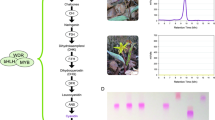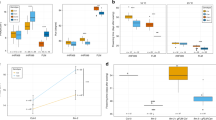Abstract
WHILE staying at Val d'Isère (Savoie) this summer, I noticed some facts which seem worthy of record as bearing on the evolutionary importance of mutations. Gentiana campestris L. was an abundant plant in many localities round the village. Not infrequently variants were noted in which the corolla was white and the leaves paler green than normal (“albinos”). It is not to be doubted that such forms have arisen from the type by a recessive mutation. Sometimes these mutants were found singly. This is in my experience the usual state of affairs with white-flowered mutants of other wild species (e.g. wild hyacinth), and was also the case with pink-tinged Saxifraga oppositifolia noted by me in Spitsbergen in 1921.
This is a preview of subscription content, access via your institution
Access options
Subscribe to this journal
Receive 51 print issues and online access
$199.00 per year
only $3.90 per issue
Buy this article
- Purchase on Springer Link
- Instant access to full article PDF
Prices may be subject to local taxes which are calculated during checkout
Similar content being viewed by others
Author information
Authors and Affiliations
Rights and permissions
About this article
Cite this article
HUXLEY, J. Mutant Groups in Nature. Nature 116, 497–498 (1925). https://doi.org/10.1038/116497b0
Published:
Issue Date:
DOI: https://doi.org/10.1038/116497b0
Comments
By submitting a comment you agree to abide by our Terms and Community Guidelines. If you find something abusive or that does not comply with our terms or guidelines please flag it as inappropriate.



